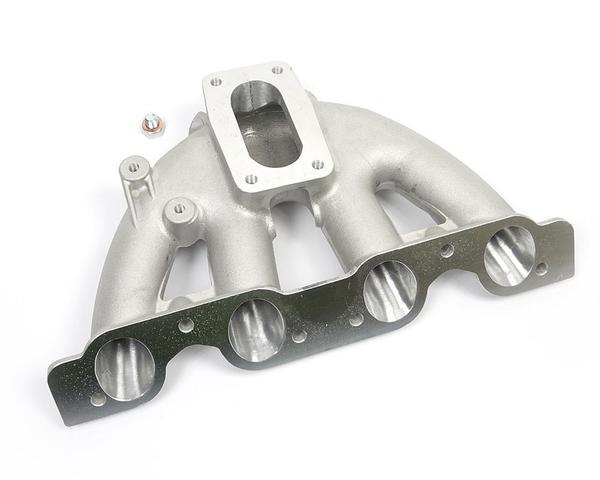DVP Tests, Performance Test, Durability Test and Endurance Test for child part, assembly and whole vehicle
Please read previous blog for DVP requirement and why it is done, What is front loading concept in DVP and how testing environment is changing in OEMs.
In this blog we only propose some standard test which are must to go next stage of prototype part development.
A. Define Performance and Durability
Requirement:
|
Subsystem
|
Performance Requirement
|
Durability Requirement
|
|
Engine
|
High Constant Torque, High
Power, Less Fuel Consumption, Less Vibration, High Cooling Efficiency, Low
Frictional Loss
|
High Vibration, High
Temperature , Cyclic Loading , High Rotating Parts
|
|
Body
|
High Downforce, Less air
resistance , High Crash Strength , Light Weight , Comfortable
|
Impact Load, Concentric
Load, High Vibration, High Temperature
|
|
Suspension
|
Smooth Damping , Low Centre
of Gravity, Controlled Drivability , No Slip/Topple/Skit
|
Impact Load, Jerk Load,
Damping Vibration
|
|
Brake
|
Less Driver Effort, High
Braking Life, Smooth Braking, Low Braking Distance and time
|
Cyclic Loading ,High Temperature , High
Pressure , Corrosion
|
|
Steering
|
Less Driver Effort, High Sensitivity & Accuracy, Low
Response Time, Quick Angle Ratio
|
Cyclic Loading, High Wear,
Friction
|
B.1. Child Parts Test Procedure and
Criteria: (For these tests both simulation and physical test must be done)
|
Test
|
Measure/Check
|
Criteria
|
|
Assembly
|
Fouling, Touching,
Tolerance, Ergonomics, Dimension, Rules/Regulation,
|
No two part rubbing/fouling,
Child part dimensions, design as per rules
|
|
Performance Test
|
A. Leakage Rate, B.
Pressure Output , C. Current Consumption, D. Discharge Coefficient E.
Sensitivity, F. Pressure Drop, G. Particle Size H. Performance Drop, I. Flow
Rate J. Spring Coefficient H. Hysteresis
|
Part can meet vehicle
requirement such as quantity of fuel, air, oil and coolant, Current
Consumption, Voltage Gradient, ECU Compatibility
|
|
Durability Test
|
Stress, Strain, Natural
Frequency, Bending Moment, Braking Force, Leakage Pressure,
Fatigue, Cyclic Loading,
Wear, O-Ring/ Gasket Compression, Creep, Crash/Impact, Sensor Burnt
|
No deformation, damage,
& wear in part. No performance degradation.
Meet accuracy and
sensitivity.
|
B.2. Durability Test for Different
Subsystem
|
Subsystem
|
Process
|
Durability Test
|
Criteria
|
|
Engine Power -Train
|
1. Check result of Step 1,
Step 2 & B.1
2.Measure each part before
fitment
2. Do Each Test
3. Record Performance
4.Measure all part
Dimension after test
|
1.Up Down Test- 1000 RPM to
13000 RPM in 5min , for 1000 Hours,
2. High Speed - run engine
at 13000 rpm for 2000 Hours
3. Go Stop - On and Off
Engine for 1 min, 1000 Times
4. Thermal Test - Run
Engine without coolant or with 50% coolant for say 1 hour
|
No Leakage of Engine oil -
Engine coolant- fuel , No damage , No High Noise, No high Vibration should
occur
|
|
Body
|
1. Sweep Vibration Test- 0
hertz to 300 hertz in 10 min in X,Y, Z Direction, 240 Hours
2. Fix Vibration Test
- Fix 300 hertz for 2 min in X+Y+Z
Direction, 500 Hours
3. Crash Test – Speed
55Km/h, Front Impact & Side Impact
|
1/2: No Deformation or
Crack in body.
3: No head injury to dummy;
No fuel leakage
|
|
|
Suspension
|
1:Composite Durability- 100°C,
Fix 300 hertz for 2 min in X+Y+Z Direction, 500 Hours
2:Weld Strength- Check
Braking load of each welding
3: Dyno Cyclic/Fatigue
Damping- Fix suspension on Dyno and damp & Vibrate structure
|
1/3 No Deformation or Crack
in body.
2. Match result with
simulation result
|
|
|
Brake
|
1:Disc & Pad Wear:
Rotate disc, apply full brake 1000 Times, measure wear and disc stopping time
2:Pedal Breaking Effort:
Driver Apply Breaking Load for Pedal ( Check Annexure for detail)
3: Burst Test for Master
Cylinder, Brake Pipe
|
1: No change in before and
after part breaking time.
2: More than 75 Kg load
3:More than 212 Bar
|
|
|
Steering
|
1:Crash Test- As per
Formula Ford Rule
2:Column Breaking Effort-
Apply torque at Column
3.Gear Tooth Breaking Load
– Measure Rack/Pinion gear tooth breakage load ( Check Annexure for detail)
|
1:No damage to dummy
2: No deformation, brake ,
wear in rack and pinion
|
B.3. Performance Test for Different
Subsystem
|
Subsystem
|
Test Name
|
Criteria
|
|
Engine
|
Dyno
Test with/ Without Transmission
|
1:High Constant Torque;
2:Volumetoic Efficiency above 90% at all RPM; 3: Low Pumping Loss; 4.Emission
Norms as per EURO6
|
|
Body
|
Wind tunnel Test
|
1:Low Air Resistance ; 2:
High Downforce
|
|
Suspension
|
Chassis Dyno Test
|
1:Comfort; 2:Damping
/Vibration Transfer to Driver Seat/Steering Wheel
|
|
Brake
|
Bench Test
|
1:Low braking Distance;
2:Braking Response Time;
|
|
Steering
|
Bench Test
|
1:Wheel to Steering Wheel
Ratio;2:Low Steering Effort
|
B.4. Vehicle Performance &
Durability Test
|
Related to
|
Calibration/Physical
Tuning
|
Performance
Test
|
Durability
Test
|
|
Engine Power -Train
|
ECU+ All Sensors+
Actuators+ Motors; Valve Timing, Fuel Injection Timing, Emission,
Intake/Exhaust Tuning
|
Acceleration, Cruise, Cold Start Test, Fuel Consumption,
Emission
|
1. Vehicle will run 2000 Km on different type of road condition
then all parts dimension will be checked.
2. Dynamic Test : run vehicle in different driving patter such
as corner, high/low ambient temperature, sudden braking, sudden steering
3. Static Vehicle Test: After above Test 1 & 2 check for
fuel leakage, oil leakage, compare performance before and after test.
|
|
Body
|
All Sensors, Driver Position, Yaw, Roll, Pitch
|
Vehicle Downforce, Air Drag,
Stability,
|
|
|
Suspension
|
All Sensors, Damping,
Camber, Caster, Cabin Vibration
|
Suspension Vibration &
Damping, Tyre Wear
|
|
|
Brake
|
Brake Sensors, Pedal
Position, Ergonomics; Fuel Cut Off Brake Fail ( Check Annexure for detail)
|
Dry/Wet Braking Distance
& Time, Uphill/Down Hill Braking, Braking Force
|
|
|
Steering
|
Steering Sensor, Steering
Position, Ergonomics, Fuel Cut Off Steering Fail ( Check Annexure for detail)
|
Steering Force Test; Corner Steering; Up/Down Hill Steering;
Maximum Steering Angle; Steering with high Slip; Flat/Wear Tyre Steering
|
Performance Test is done for function
check for All Sensors/Motors/Pumps/ Actuators/ Embedded parts/moving parts such
as Fuel Injector, Throttle body, Spark Plug, Fuel/Oil/Water Pump, springs.
Durability Test is done for life
check for all functional, non functional and structural parts such as brake
pad/disc/pipe, steering column/rack/pinion, engine piston/cylinder/crank,
chassis frame/wings, suspension spring/frame.
|
Common Performance
Test Name
|
A. Leakage Rate, B.
Pressure Output , C. Current Consumption, D. Discharge Coefficient
E. Sensitivity, F. Pressure
Drop, G. Particle Size H. Performance Drop, I. Flow Rate
J. Spring Coefficient H.
Hysteresis
|
|
Common
Durability
Test Name
|
1. Leak Test 2. Burst Pressure Measurement 3. Joint Leakage Test
200 Bar for 30 Sec
4. Salt Spray (NaCl), 5. Material Test 6. Impact Drop Test 7. Thermal Test, 8. Heat Shock
9. Boiling Point, 10. Composite Durability, 11. 30g Vibration
Test, 12. Chemical Resistance,
13. Dimension Test, 14. Tolerance, GDNT, Assembly Check, 15. Hardness Test, 16. Temperature Density Graph 17. Temperature Viscosity Graph18. Fluid Compressibility 19. Water Content % Check 20. Voltage Graph, 21. Current Graph 22. Resistance Graph 23. Pressure Graph 24. Pressure Sensitivity 25. Spring Constant 26. Grip, Sharp Edge, Ergonomics 27. Hand Brake Cable Braking Force Measurement 28. Cable Elongation |







